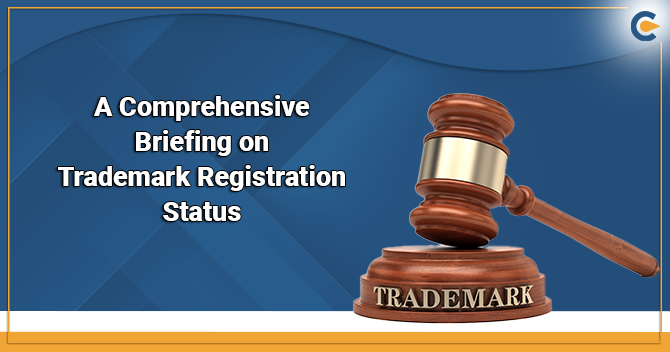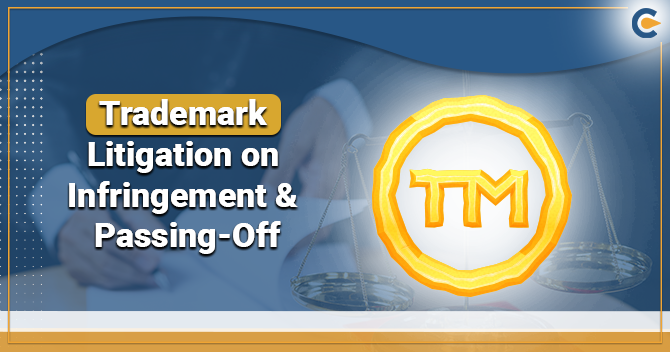Trademark is one of the important and primary ways for a medical device company to convey their brand to patients, medical professionals and healthcare systems. The Trademark act provides a proper procedure for searching for trademarks. This system is provided to avoid future discrepancies, litigation, or conflicts in the Trademark (whether registered or not) before applying for or using any trademark. There are certain conditions which are required to be followed to get the Trademark registered. The TM Act 1999 provides absolute and relative grounds for the refusal of Trademark Registration. Scroll down to check more details regarding the Trademark for Medical Devices.
What is a Trademark?
A Trademark is a phrase, logo, colour, sequence, and shape that provides uniqueness to the brand and product and makes it different from the competitors. It is a marketing tool that helps increase the business’s finances. Sometimes people get confused with the logo and brand name of the product. The brand name is usually the symbol or logo, the Trademark is the distinguishing sign, and it has broader implications than the brand name. The Trademark law was later with the Trademark and Merchandise Act, 1958. The replaced law protects Trademark and prevents misuse or fraudulent use of marks on merchandise. The Act provides registration of the Trademark so that the owner of the Trademark may get a legal right for its exclusive use.
A Brief on Trademark for Medical Devices in India
In India, both statutory and common law govern Trademark. The Trade and Merchandise Marks Act, 1940, was India’s first legislation concerning trademarks, and then it was replaced by the Trade and Merchandise Marks Act, 1958 (TM Act, 1958).
The TM Act got updated in 1999 to comply with TRIPS, and since then, it has been known as The Trade Marks Act 1999[1] (“TM Act 1999”). The TM Act 1999 allows for the registration of service marks and three-dimensional marks.
In India, there is a proper classification of goods and services. The classification is incorporated in the rule’s schedule under the Trademark Act 1999. There are different classes under which medical devices are covered.
- Class 10 – covers Medical devices.
- Class 44 – covers the services for Medical services, veterinary services and cosmetics.
- Class 42 – covers Scientific and technological services and research and design.
- Class 44 – veterinary services; Medical services; beauty care and hygienic and for human beings or animals and also agriculture, forestry services and horticulture
- Class 42 – technological and scientific services and research and design relating to it; it also includes industrial analysis and research services; design and development of computer hardware and software.
Trademark Class 10: Surgical and Medical Instruments
Trademarks must be applied under classes only, and each class represents a distinct class of goods or services. This blog comprehensively covers the goods under Class 10 of trademark classification. Trademark Class 10 is about surgical, medical, dental and veterinary apparatus and instruments, artificial limbs, eyes and teeth; orthopaedic articles; suture materials.
The following list of goods is also categorised as Class 10:
- Special furniture for medical use;
- Hygienic rubber articles;
- Supportive bandages.
Therefore, Trademark Class 10 includes mainly medical apparatus, instruments and articles.
The following are the goods that must not be classified under Class 10:
- Hand tools and implements, hand-operated;
Documents Required for the Registration of Trademark for Medical Devices
Following are some documents required for the Registration of Trademark for Medical Devices:
| S.no | Company | Sole Proprietor | Partnership Firm |
| 1. | PAN Card, Aadhar card etc | PAN Card of individual or sole proprietor | Aadhar card, PAN etc |
| 2. | GST – if the Company has GST in its Name | AADHAR Card of an individual or sole proprietor | GST (if any)- if the firm has taken GST in its Name |
| 3. | LOGO (if any)- mention the logo; if any logo is there | . LOGO (if any) mention the logo. If any logo is there, | LOGO (if any)- mention the logo; if any logo is there, |
| 4 | Trademark description- description of goods or services | Trademark description – a detailed description of goods or services | Trademark description- description of goods or services |
| 5 | Form -48 (POA) | Form -48 (POA) | Form -48 (POA) |
| 6 | Mobile no. | Mobile no. | Mobile no. |
| 7 | Email id | Email id | Email id |
| 8 | MSME (if any) | MSME (if any) | MSME (if any) |
| 9 | COI-Certificate of Incorporation | GST (if any)- if the individual or sole proprietor firm has taken GST in its Name, it must be used | Partnership deed |
Process for the Registration of Trademark for Medical Devices
Following is the step-by-step process of Trademark for Medical Devices:
Step 1: Trademark Search
This step is significant before filing for an application for a Trademark for Medical Devices as doing an exhaustive search will help trademark applicants ascertain whether their mark is different and also helps to know whether any similar mark exists or not. There is a complete list of registered Trademarks in the Trademark registry.
Step 2: Filing an Application
After completing a search, there comes the process of applying for registration. The application can be filed physically at the jurisdiction’s TM registry office or online at IP India’s official website in Form TM-A. The application must be filed for registration of a single ark only in a single class of goods and services or in a multi-class, and the fees will be calculated for each class included in the application. The application must be backed up with the required documents and complete details of the Trademark.
Step 3: Examination Process
After the filing of the application, it is adequately examined by the registrar. Then they prepare an examination report in writing and send a copy of it to the applicant within 30 days to inform the client whether the registry accepts the application or refuses it, or accepts it conditionally. The applicant must file a reply within 30 days of receiving the examination report from the registry. In the reply, the applicant is expected to put forward all the defences along with the evidence regarding the objection that is being raised by the trademark department. The applicant must also state the reason why his /her application must not be rejected.
Step 4: Post-Examination Procedures
Once the reply is filed by the applicant, the examinee, if wants, can arrange a hearing for the reason if he/ she is not satisfied with the reason being stated by the applicant for the objection that is being raised. After the hearing process, if the examiner is fully satisfied, they can accept the mark and forward it for publication in the Trademark Journal or can refuse the application if any objection is still there.
Step 5: Publication of the Trademark Application
Once the examiner accepts the application, it will get published in the Trademark Journal, which remains there for four months. The idea of the advertisement is to make it available for the third party to see and raise objections, if any. Every Monday, the journal gets updated with a newly accepted Trademark.
Step 6: Notice of Opposition
Within the time period of 4 months from the publication date of the application, any party who is aggrieved can file a notice of opposition in Form TM-O. If a third party feels that their already in existence trademark is being used and infringed or the application has been made in bad faith, it will spoil the image of the applicant if it gets registered. Then there will be a notice to halt the registration process as per the Trademark Act, 1999, and applicant wish to continue with the same Trademark, then he /she has to go through a certain legal process.
Step 7: Registration
The last step in the process of registration is to get the certificate of the same. If the mark passes all the legal processes, the applicant will receive the certificate of Trademark for Medical Devices.
If no opposition is found or in case there is false opposition, then after four months of the Publication period, within 7 days, an auto-generated Registration certificate will be issued to the applicant by the trademark registry office. The Timeline of registration is 10 years in order to keep the Trademark alive.
Conclusion
Identifying the Trademark Class is vital before filing the application for the Registration of a Trademark for Medical Devices in India. If a Trademark is used for products & services under different classes, separate applications are required to be filed under each class to get the protection of the Trademark for the respective products & services.
Read Our Article:A Step by Step guide for Registration Process for Medical Devices in India











